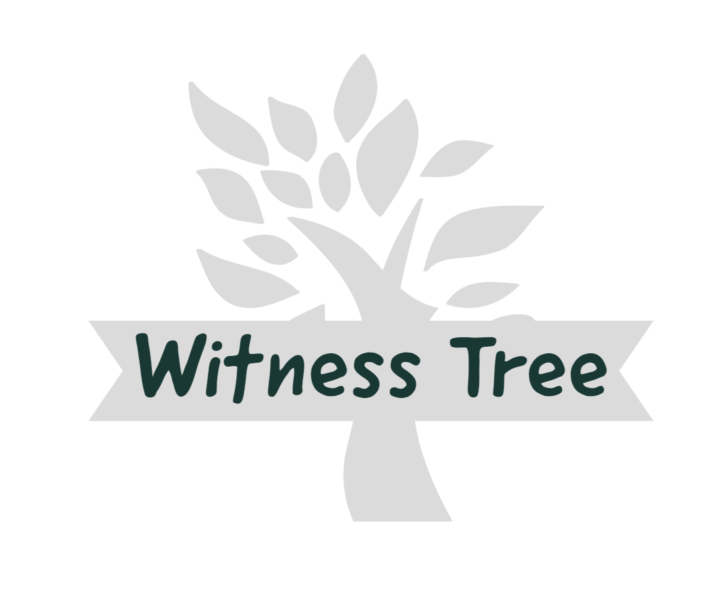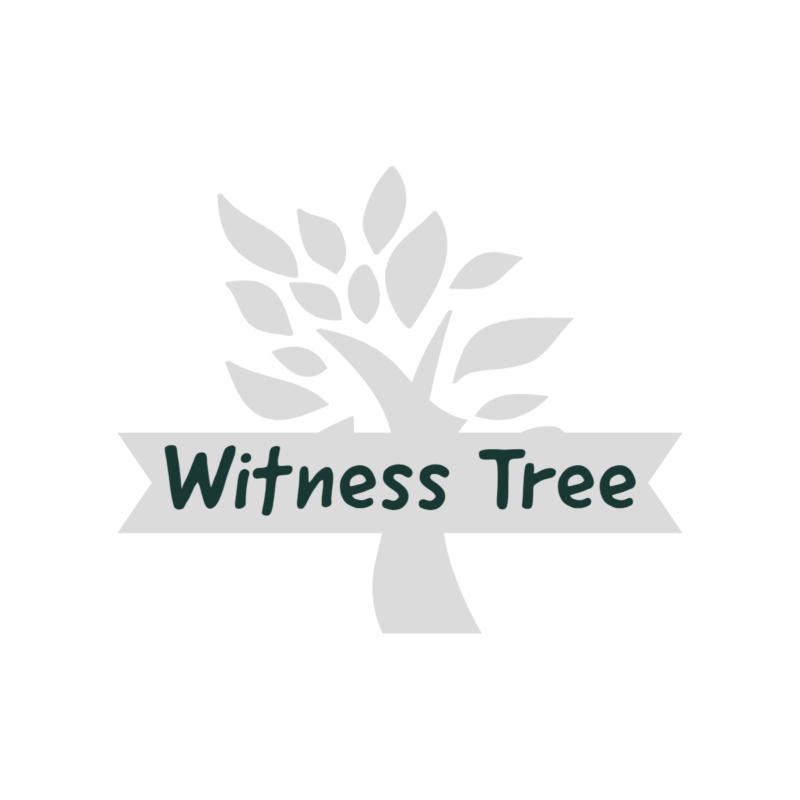Fall Color
Why plant trees with great fall color?
Trees with good fall color bring beauty to your yard in autumn, adding seasonal interest and charm. They can also boost curb appeal and raise property value.
Sugar Maple

Sugar maple trees are a great choice for fall color. They are known for their beautiful autumn leaves that create show stopping colors in the fall. Their deep emerald leaves will glow yellow as the temps drop, then they transform to orange, and finally deep red.
Sugar maples produce sap which can be boiled down into maple syrup and also provide vital habitat for wildlife such as birds and squirrels. However, sugar maples are intolerant of salt spray and compacted soil.
Height: 60 – 75 feet
Spread: 40 – 50 feet
Growth Rate: Moderate
Soil Preference: Moist, well drained.
Pros: Native. Tolerates alkaline, clay soil.
Cons: Shallow roots, susceptible to leaf scorch.
Hardiness zones: Zones 4 – 8
Recommended cultivars: Fall Fiesta® (acer saccharum ‘Bailsta’), Green Mountain® (acer saccharum ‘Green Mountain’)
Ginkgo

Ginkgo is a hardy and pest resistant tree with fan shaped leaves that turn brilliant yellow in fall. Only male trees should be purchased as the females produce seeds with a soft, fruitlike covering that can be messy and have a bad odor.
Height: 50 – 80 feet
Spread: variable
Growth Rate: Slow
Soil Preference: Moist, well drained soil
Pros: Tolerates alkaline, clay soil, and occasional drought. Beautiful yellow fall color.
Cons: Female trees have messy, malodorous fruit. Only purchase male cultivars
Hardiness zones: Zones 4 – 9
Recommended cultivars: Autumn Gold (ginkgo balboa ‘autumn gold’)
Tupelo
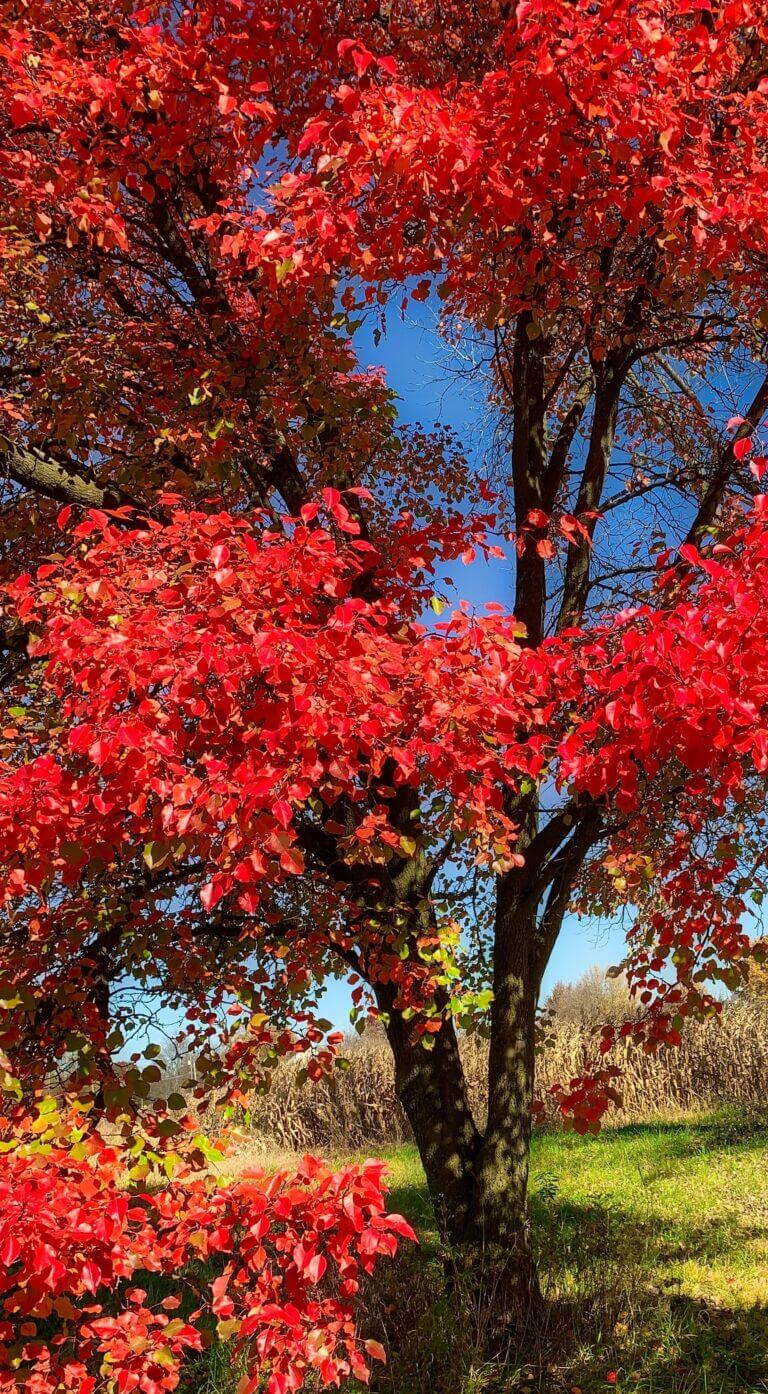
Tupelo or sour gum is a pyramidal tree with horizontal branches growing from a straight trunk. It has dark green glossy summer foliage that turns bright scarlet in fall. This species is native to the Chicago region and prefers moist, well drained, acidic soils high in organic matter. It grows best in full sun and has a taproot, making it difficult to transplant. It should be spring planted only. Chlorosis can develop in high pH soils and cankers and leaf spots are potential problems .
Height: 30 – 50 feet
Spread: 20 – 30 feet
Growth Rate: Slow
Soil Preference: Acidic, moist soil
Pros: Native. Tolerates clay, occasional drought, wet sites.
Cons: Will develop chlorosis (yellow leaves) in alkaline soil.
Hardiness zones: Zones 4 – 9
Red Oak
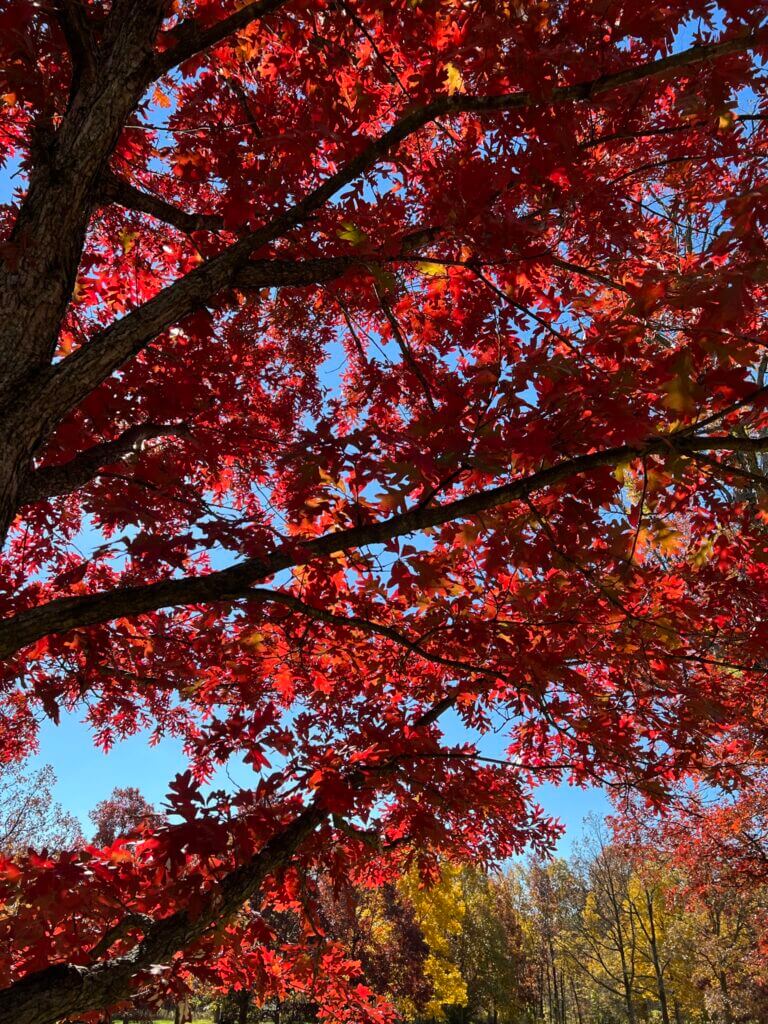
Red oak trees are known for their strong, straight trunks and beautiful red fall foliage. This native tree can grow up to 75 feet tall and does best in well drained, slightly acidic soil and play an important role by providing food and shelter for wildlife.
Red oaks are more susceptible to oak wilt than white oaks. It is essential to refrain from pruning during the growing season, from April to July. Seal wounds with tree wound dressing or latex paint if wounding is unavoidable during this time.
Height: 60 – 75 feet
Spread: 50 – 75 feet
Growth Rate: Moderate to fast
Soil Preference: Acidic, moist soil
Pros: Native. Grows rapidly while young, has beautiful red fall color and tolerates clay soil.
Cons: Susceptible to oak wilt. Messy
Hardiness zones: Zones 4 – 9
River Birch
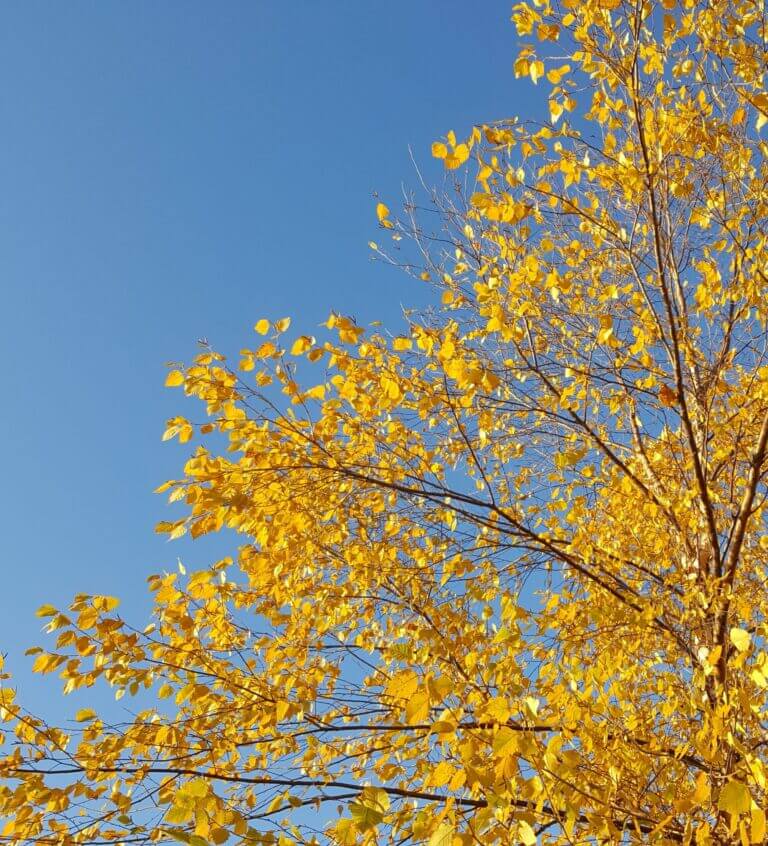
The river birch is a fast growing tree that can add beauty and interest to your yard. It has a multi-stemmed habit and attractive peeling bark that reveals shades of brown, gray, and cream and dark green leaves that turn yellow in the fall. The catkins in the spring attract birds and wildlife.
The river birch is native to Illinois and can grow well in moist or wet soils. It prefers acidic soil and full sun to partial shade and can tolerate flooding.
Height: 30 – 40 feet
Spread: 20 – 30 feet
Growth Rate: Fast
Soil Preference: Acidic, moist soil
Pros: Native. Tolerates clay, occasional flooding, wet sites. Grows fast, attractive exfoliating bark, beautiful yellow fall color.
Cons: Will develop chlorosis (yellow leaves) in alkaline soil.
Hardiness zones: Zones 4 – 9
Recommended cultivars: Heritage® river birch (Betula nigra ‘Cully’), Dura-Heat® (Betula nigra ‘BMNTF’)
American Hornbeam
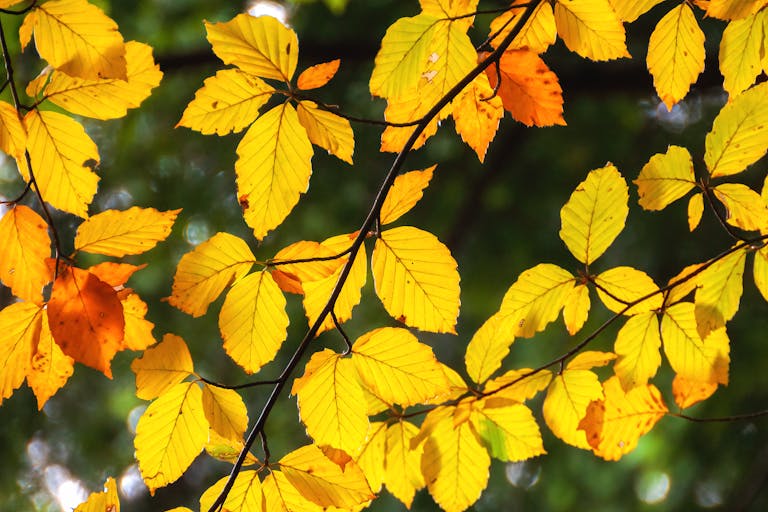
The American Hornbeam is an ornamental or small shade tree with wonderful gold to bright orange-red fall foliage. This native tree is also known as Blue Beech, Ironwood, and Musclewood. The smooth, grey bark resembles muscle.
The Hornbeam is a low maintenance tree that is resistant to pests and diseases. It can tolerate wet sites and does well in shade, but will perform best in full sun with the proper amount of moisture.
Height: 30 – 40 feet
Spread: 20 – 30 feet
Growth Rate: Slow
Soil Preference: Acidic, moist, well drained soil
Pros: Native. Tolerates alkaline soil, clay, occasional flooding, wet and dry sites.
Cons: Susceptible to canker and leaf scorch
Hardiness zones: Zones 3 – 9
